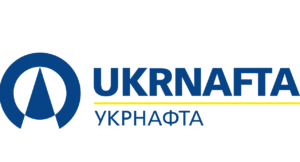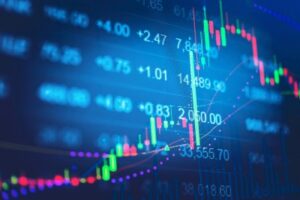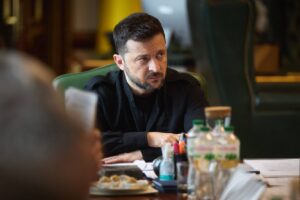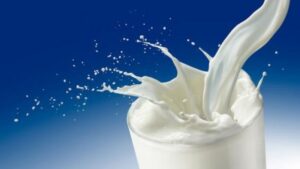
PJSC Ukrnafta has announced tenders for international Green Card insurance.
According to the Prozorro electronic public procurement system, the expected cost of the services is UAH 48,663 thousand. No tender security is required. The deadline for submission is August 9.

The cryptocurrency market is showing signs of resilience and recovery by the end of July 2025. Global crypto market capitalization remains above $2.5 trillion, with investors cautiously optimistic amid expectations of looser monetary policy in the U.S. and increased institutional inflows.
Key indicators (as of July 29, 2025):
Bitcoin (BTC): $60,820 (+3.2% month-to-date)
Ethereum (ETH): $3,415 (+5.9%)
BNB (Binance Coin): $546 (+4.4%)
Solana (SOL): $148 (+12%)
Ripple (XRP): $0.64 (+2.3%)
Key Trends in July:
BTC Stabilization — After dipping below $58,000 in June, Bitcoin stabilized above $60,000, supported by easing U.S. inflation and growing expectations of a Federal Reserve rate cut in the fall.
Rising Interest in Altcoins — Ethereum benefited from progress on the Ethereum 2.0 upgrade. Solana and Avalanche gained on announcements of major DeFi integrations.
Regulatory Signals — In the U.S., the SEC and CFTC continue their jurisdictional tug-of-war, but sentiment has improved following the approval of new crypto ETFs. In the EU, the MiCA regulation took effect, enhancing transparency.
Focus on AI and Web3 Tokens — Investor interest remains strong in tokens related to artificial intelligence, metaverse, and Web3 infrastructure. Top performers include Fetch.ai, Render, and Near Protocol.
Risks and Volatility:
Possible correction in August if the U.S. dollar strengthens
Risk of cyberattacks — July saw 7 major DeFi protocol breaches totaling over $170 million
Market sensitivity to regulatory decisions, especially from the SEC
Analyst Outlook:
According to analysts from Glassnode, CoinShares, and Messari:
– BTC could reach $65,000 by mid-August if U.S. labor market data weakens and the dollar index declines.
– ETH is likely to maintain its upward trend, particularly with continued growth in DeFi and NFT sectors.
– Altcoins focused on AI and Layer-2 solutions have potential upside of 15–20% over the next month.
– The total crypto market cap could reach $2.7 trillion by September under favorable macro conditions.
Conclusion:
The end of July marks a recovery phase for the crypto market after its summer downturn. Investors are focusing on fundamentally strong projects and infrastructure tokens. While volatility remains, market sentiment is positive, assuming the Fed maintains a dovish stance and global markets remain politically stable.
Source: https://www.fixygen.ua/news/20250729/crypto-market-ends-july-on-an-upward-note-fixygen-review.html

Agroprodservice PJSC has launched a new factory for canning and manufacturing semi-finished products from vegetables in the Velykoberezovytska community (Ternopil region), according to a press release posted on the community’s Facebook page.
According to the report, the new food factory, Babusi Marusi, will produce canned vegetables, pickles, and semi-finished products from vacuum-packed vegetables.
The company already employs 26 people. The plant plans to hire a permanent staff of about 50 employees, including 10 highly qualified specialists. In the future, it plans to introduce modern production automation technologies and enter new markets, including outside Ukraine.
“The development of the enterprise will create new jobs for the community, increase local budget revenues, and make the area more attractive to investors. This will help improve the standard of living and support infrastructure development,” the company said.
PJSC “Agroprodservice” was established in 1999.
As a diversified enterprise, it operates in the Ternopil and Ivano-Frankivsk regions. It cultivates about 45,000 hectares of land. Agroprodservice owns grain elevators with a total storage capacity of 200,000 tons, a feed mill, and a seed plant.
The company is also engaged in poultry farming (2 million birds), cattle breeding (about 6,000 head, including 2,000 dairy cows) and pig breeding (60,000 head).
The ultimate beneficiaries of PAP “Agroprodservice” (Nastasiv, Ternopil region) are Tetiana Chaykivska (owns 70% of the company’s shares) — wife of People’s Deputy Ivan Chaykivsky, secretary of the Verkhovna Rada’s Agrarian Committee — and Andriy Baran (30%).
AGROPRODSERVICE, canned food, FACTORY, SEMI-FINISHED PRODUCTS, TERNOPIL REGION

Mobile operator lifecell, part of the DVL (Datagroup-Volia-lifecell) group of companies, attracted over 1,400 businesses that transferred their business numbers to it in July, according to a press release.
“As of July 2025, more than 1,400 companies have transferred thousands of business numbers to the lifecell network, choosing the operator’s tariffs and services. In 2025, lifecell recorded a twofold increase in the volume of corporate number transfers compared to the same period in 2024,” the lifecell press service said in a statement on Tuesday.
It is noted that the procedure for transferring business numbers consists of three stages and takes up to three working days.
Earlier it was reported that in January-June 2025, lifecell became the leader among operators in terms of the number of subscribers.

Ukrainian President Volodymyr Zelensky has signed a law recognizing Ukrainian citizens who were forcibly resettled from the territory of the Polish People’s Republic in 1944-1951 as deportees. The relevant law card No. 4540-IX with the signature of the President of Ukraine has been published on the website of the Verkhovna Rada.
Ukrainian Foreign Minister Andriy Sibiga noted that this law restores historical justice regarding this “horrible crime.”
“President of Ukraine Volodymyr Zelenskyy has just signed an important law restoring the memory of Ukrainians forcibly deported from Poland in 1944-1951. This is a correct and dignified step that restores historical justice regarding this horrific crime. I thank the president for supporting this decision, as well as the members of parliament who developed and implemented it,” he wrote on his Facebook page.
The minister noted that “many witnesses of those tragic events have already passed away,” but in order to protect the rights of “those who still live with us and their descendants,” Ukraine guarantees the provision of assistance as provided by law.

In June 2025, farms of all categories produced 657,000 tons of raw milk, which is 28,000 tons (-4%) less than in May 2025, but 47,000 tons (-7%) less than in June 2024, according to the Association of Milk Producers (AMP) citing data from the Ministry of Economy.
The industry association noted that in January-June 2025, milk production in Ukraine amounted to 3.39 million tons, which is 179,000 tons (-5%) less than in the same period last year. In June 2025, the share of enterprises in raw milk production was 39%, and that of private households was 61%.
At the same time, enterprises produced 257,700 tons of raw milk in June 2025, which is 12,400 tons (-4.6%) less than in May 2025, but 5,000 tons (+2%) more than in June 2024. In January-June 2025, dairy farms produced 1.56 million tons of raw milk, which is 63 thousand tons more (+4%) than in the same period last year.
In June 2025, milk production in private households amounted to 400,000 tons, which is 16,000 tons (-14%) less than in May 2025 and 53,000 tons (-12%) less than in June 2024. In January-June 2025, the household sector produced 1.82 thousand tons of raw milk, which is 242 thousand tons less (-12%) than in the same period last year.
The AVM noted that milk production increased the most in the Lviv (+21%), Zakarpattia (+20%), Khmelnytskyi (+17%), Mykolaiv (+13%), and Ternopil (+10%) regions compared to the same period last year.
“The growth rate of raw milk production in the industrial sector of Ukraine since the beginning of 2025 has been one of the best in Europe and the world. (..) Dairy farms increased milk production despite Russian missile and bomb strikes, relocation, and rising production costs. However, despite the increase in production in the industrial sector, milk yields in private farms continue to decline on an annual basis. It is likely that if private farms do not consolidate by 2030, their milk will no longer be sent for processing and will be used for their own consumption,” said Georgiy Kukhaleishvili, an analyst at the association.
In January-June 2025, dairy farms increased raw milk production in 14 regions. The regions of Central and Northern Ukraine remain the leaders in terms of raw milk production. However, the largest growth in raw milk production is observed in the Lviv, Zakarpattia, and Khmelnytskyi regions, which is associated with the construction of new dairy farms in western Ukraine. They compensate for the reduction in milk yield in the eastern and southern regions of Ukraine due to ongoing military operations.
At the same time, raw milk production at dairy farms in Ukraine is held back by the unwillingness of milk processing companies to buy it at a fair price as farmers’ production costs go up, according to the industry association.
“Domestic milk processing enterprises with outdated technology are unable to compete on quality with enterprises in developed countries. Therefore, they are not ready to buy raw milk at adequate prices, as they sell their products at lower prices to remain competitive in export markets,” the AVM emphasized.
Uncertainty in the market also prevents dairy farms from significantly increasing milk production in the future. After the European Commission canceled autonomous trade measures (ATMs) in June, Ukraine and the EU revised their trade agreement, agreeing on new quotas for Ukrainian dairy exports, provided that Ukraine gradually transitions to EU standards by 2028. However, the new document has not yet been signed due to the position of Hungary, Poland, Romania, Bulgaria, and Slovakia on customs duties and quotas for Ukrainian grain, which are also stipulated in the agreement.
“There is a risk that exports of dairy products from Ukraine to the EU will be suspended next month if the new conditions do not come into force in the near future. In such a scenario, exports of exchange-traded goods to the EU will be suspended, demand for milk from processors may decline, and the emergence of surpluses will negatively affect prices,” the AVM concluded.